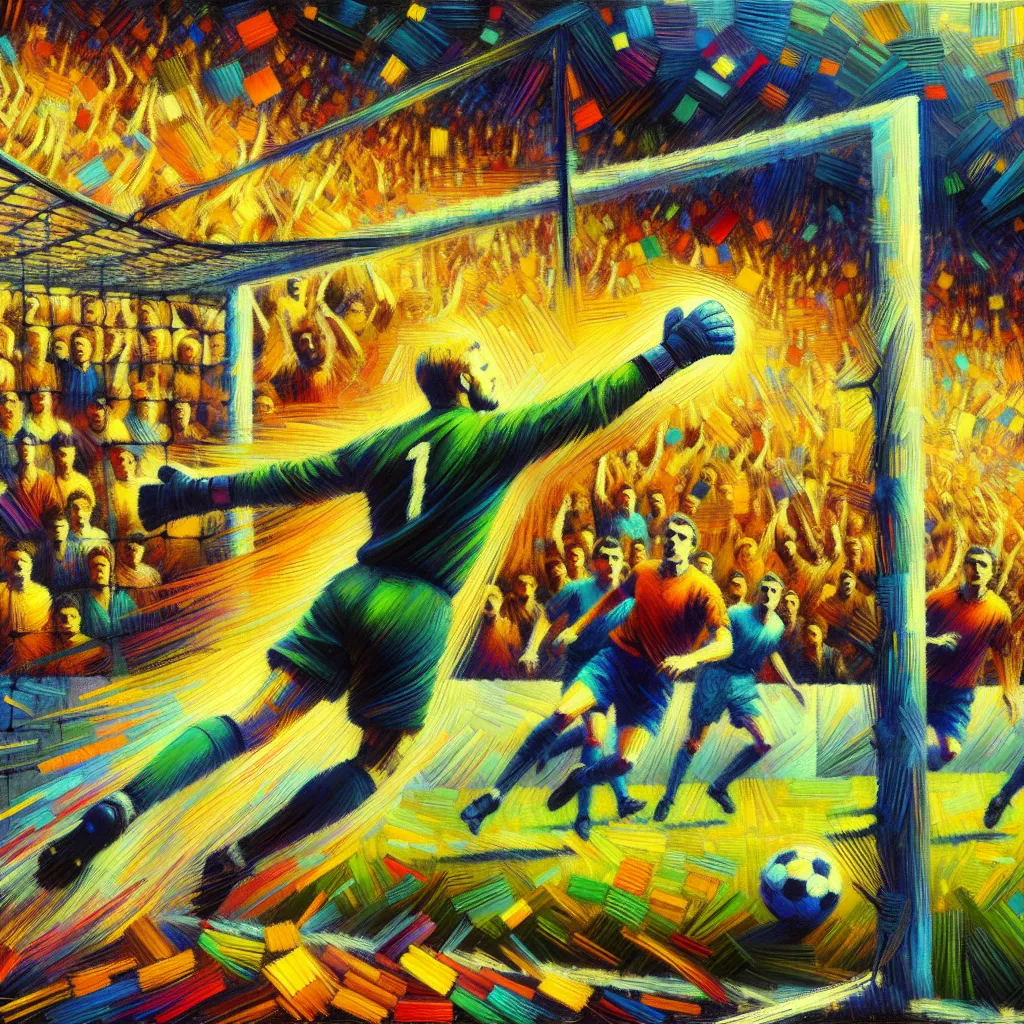
- Published on
- Authors

- Name
- Sports Tips
Sweeper Keeper: Extending the Goalkeeper's Role Beyond the Box
In the dynamic world of modern football, the role of the goalkeeper has undergone a significant transformation. No longer confined to the penalty area, the emergence of the sweeper keeper redefines the traditional responsibilities of the last line of defense. This article delves into the characteristics and tactical benefits of this role, merging player insights with coaching wisdom to provide a comprehensive understanding.
What is a Sweeper Keeper?
A sweeper keeper is a goalkeeper who not only guards the net but also acts as an auxiliary defender. Positioned slightly higher up the pitch, this type of goalkeeper is adept at intercepting long balls, clearing danger outside the box, and initiating attacks.
The sweeper keeper role demands unique attributes:
- Excellent Positioning: Knowing when to step out and cover the space behind the defensive line.
- Speed and Agility: Reacting quickly to opposing through balls and potential one-on-one situations.
- Ball Handling Skills: Proficiency with both feet to distribute the ball effectively and initiate counter-attacks.
- Communication: Directing the defense and ensuring tight coordination with backline players.
Tactical Benefits
Below is a table summarizing the tactical benefits of employing a sweeper keeper compared to a traditional goalkeeper:
| Benefit | Sweeper Keeper | Traditional Goalkeeper |
|---|---|---|
| Defensive Coverage | Expands coverage area, closes gaps instantly | Primarily focused on goal-line defense |
| Possession Play | Initiates attacks, contributes to build-up play | Clears ball, limited involvement in buildup |
| Counterattacks | Swiftly starts counters with precise passing | Primarily relies on defenders to distribute |
| High Pressing | Supports high defensive line, intercepts long balls | Stays closer to goal, unable to press high |
Enhanced Defensive Coverage
One of the primary advantages is the extended defensive coverage. By positioning higher up, a sweeper keeper can act as an eleventh outfield player, closing down on through balls and preventing counterattacks before they develop. This was famously employed by Bayern Munich's Manuel Neuer, often considered the archetype of the modern sweeper keeper, providing his team with an extra layer of security.
Possession and Build-up Play
In possession-centric teams, such as Barcelona under Pep Guardiola, the goalkeeper's role in build-up play is crucial. A sweeper keeper’s ability to control and distribute the ball effectively allows for smoother transitions and maintains possession under pressure. This skill set not only alleviates the burden on the defenders but also opens up multiple avenues for advancing the ball up the pitch.
Speed and Agility in Counterattacks
The ability to swiftly transition from defense to attack distinguishes a sweeper keeper. Quick reflexes combined with accurate passing can turn a defensive interception into a scoring opportunity within seconds. This has been a hallmark of Liverpool's Alisson Becker, who frequently uses his distribution skills to launch potent counterattacks.
Support for a High Defensive Line
For teams that employ a high pressing strategy, a sweeper keeper is imperative. With the defense pushing up the field to compress space and apply pressure, the danger of through balls increases. A proactive goalkeeper mitigates this risk by effectively nullifying the attacking threat before it reaches the defensive third.
Training Focus: Developing a Sweeper Keeper
To cultivate a sweeper keeper, training must encompass various drills and sessions:
- Positioning Drills: Focus on game scenarios that enhance decision-making about when to leave the penalty area.
- Footwork Skills: Emphasize ball control and distribution with both feet to improve passing accuracy under pressure.
- Agility Exercises: Incorporate lateral movements and speed drills to boost reaction times.
- Game Simulation: Utilize small-sided games to simulate high pressing scenarios and through-ball interceptions.
Sample Drill: Through Ball Interception
- Setup: Place a goal at one end and two rows of cones creating a channel leading up to the goal.
- Execution: Players from the midpoint attempt through balls aiming for a striker making runs toward goal. The goalkeeper must anticipate, sprint, and clear the ball before the striker can get a shot off.
This drill enhances the keeper’s timing and decision-making, mimicking real-match situations requiring quick action beyond the box.
In conclusion, the role of a sweeper keeper is integral to the tactical evolution within modern football. By extending their function beyond the box, they offer enhanced defensive coverage, bolster possession play, catalyze counters, and support high pressing tactics. Embracing this role necessitates a blend of technical skills, strategic understanding, and consistent training – the hallmarks of the contemporary shot-stopper.
Aspiring goalkeepers and coaches aiming to refine this role must focus on the outlined attributes and tailor their training methodologies accordingly. The rewards, as evident in the performances of pioneers like Neuer and Alisson, can redefine a Teams defensive solidity and offensive prowess.
